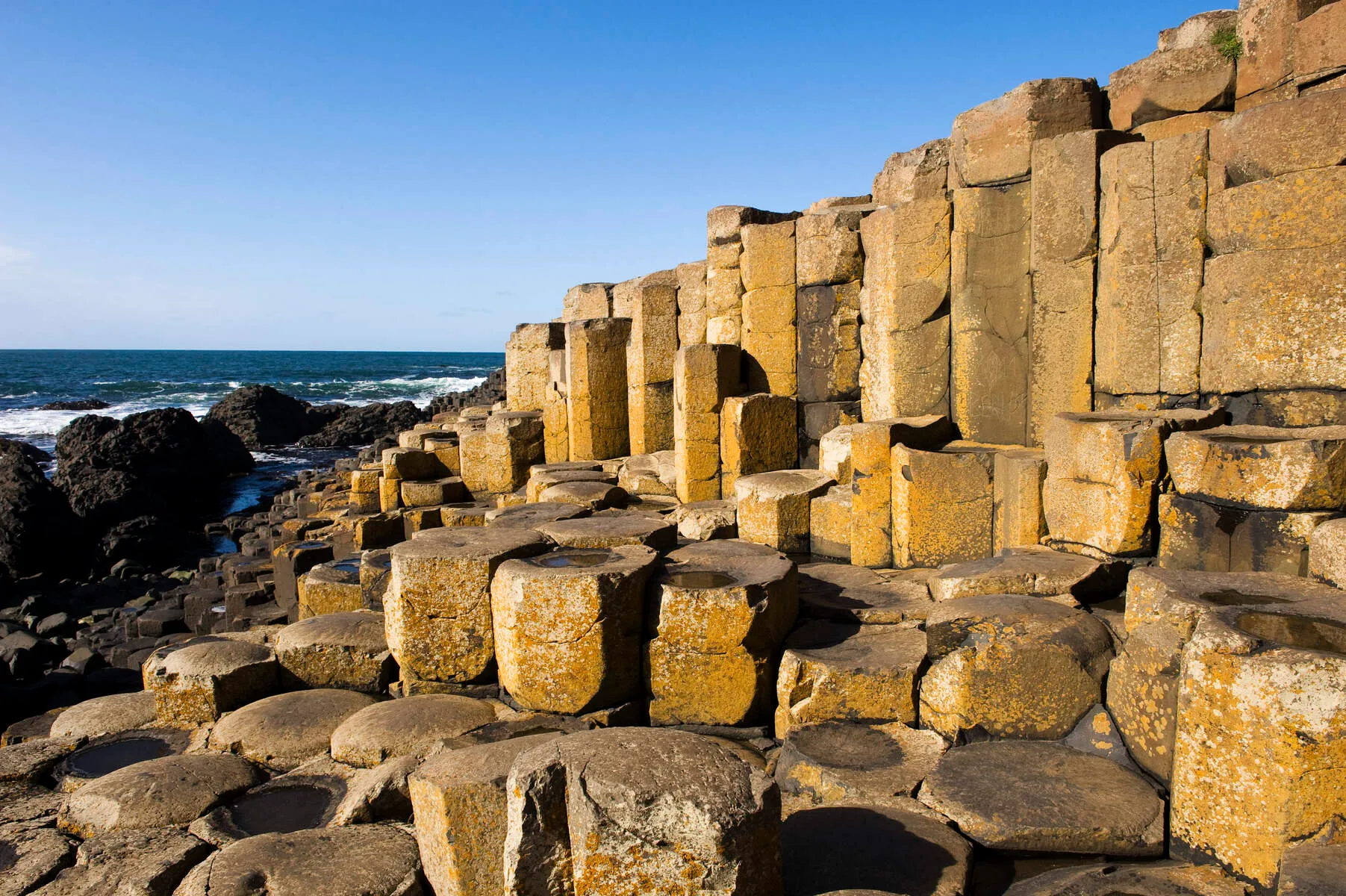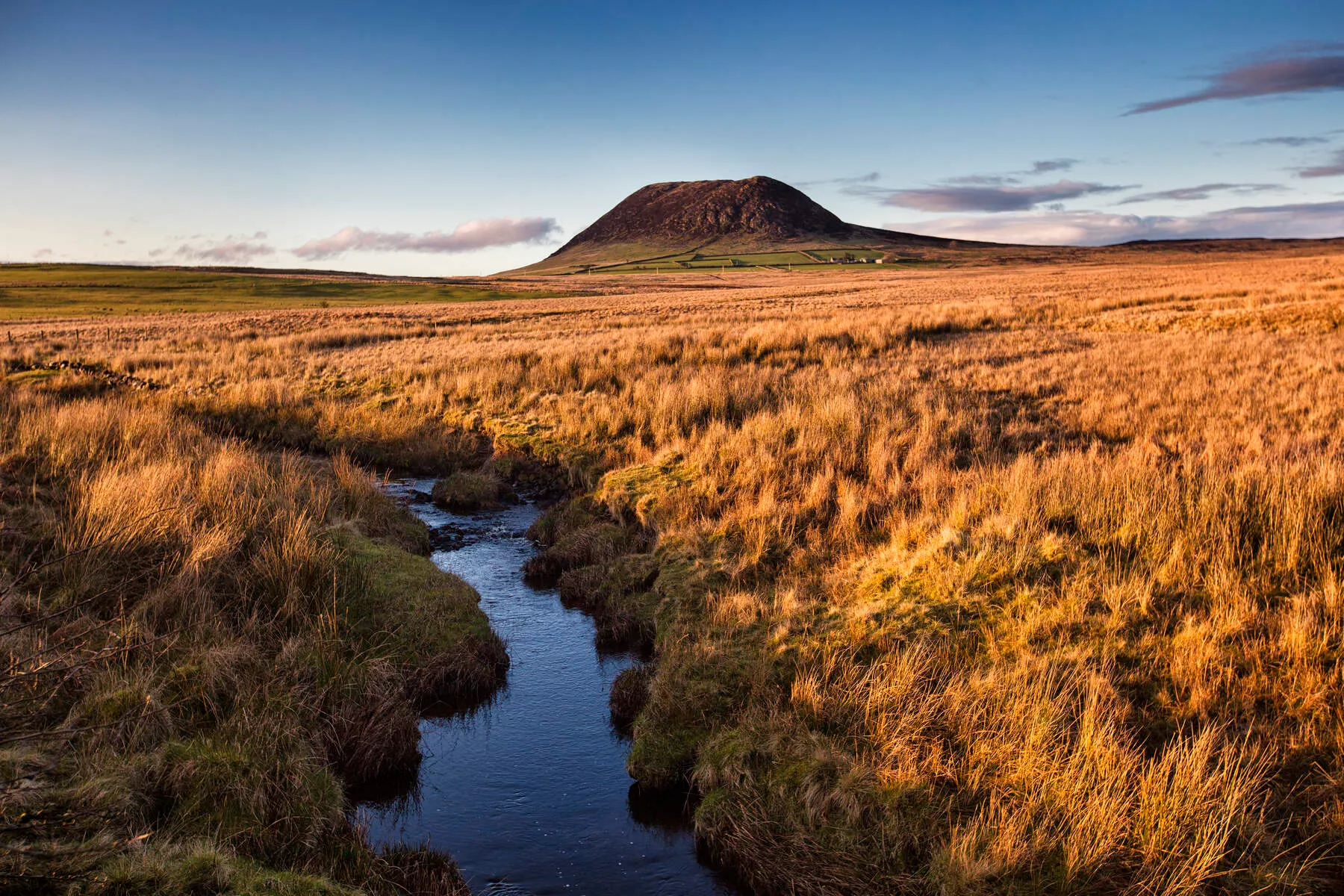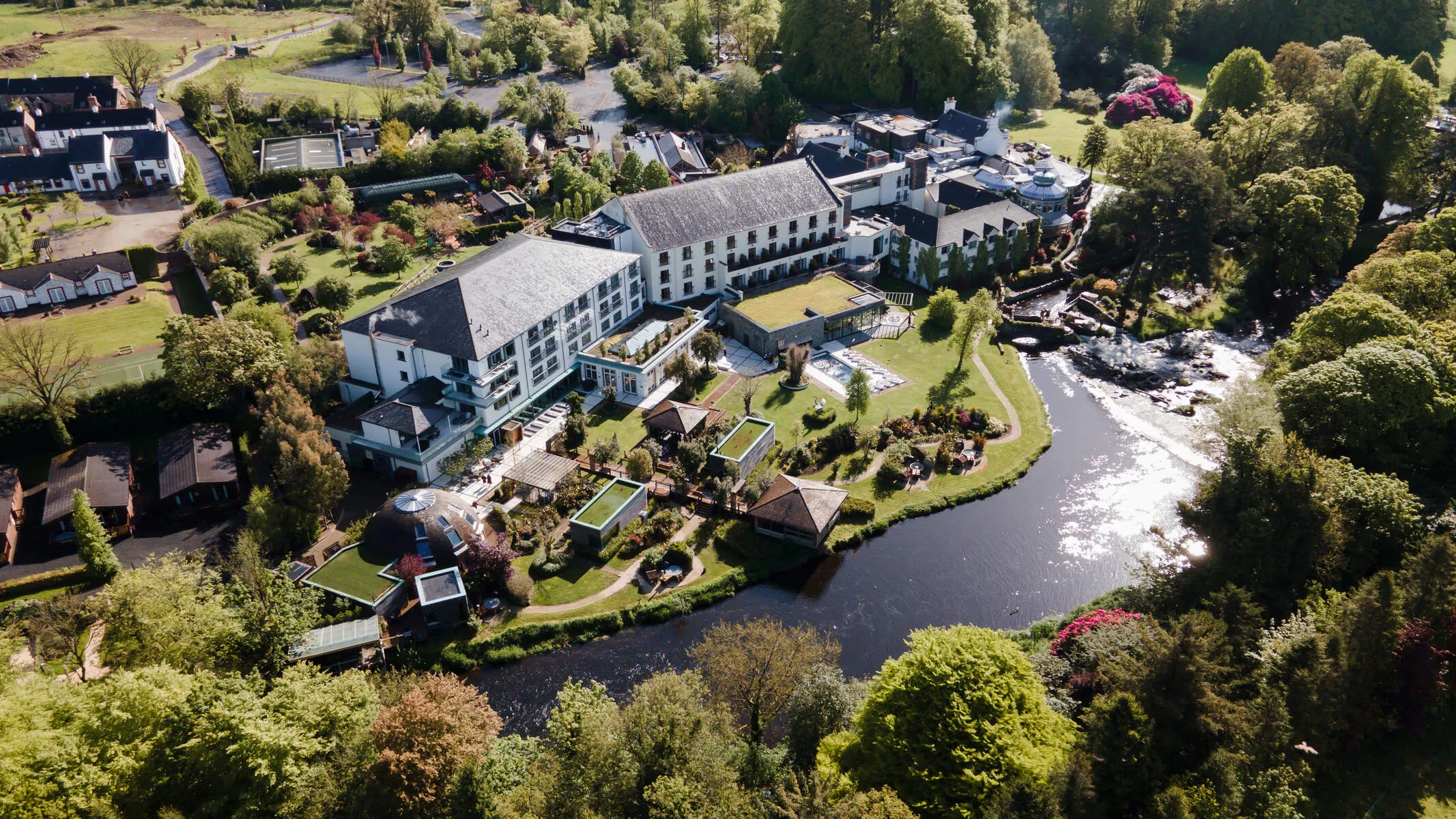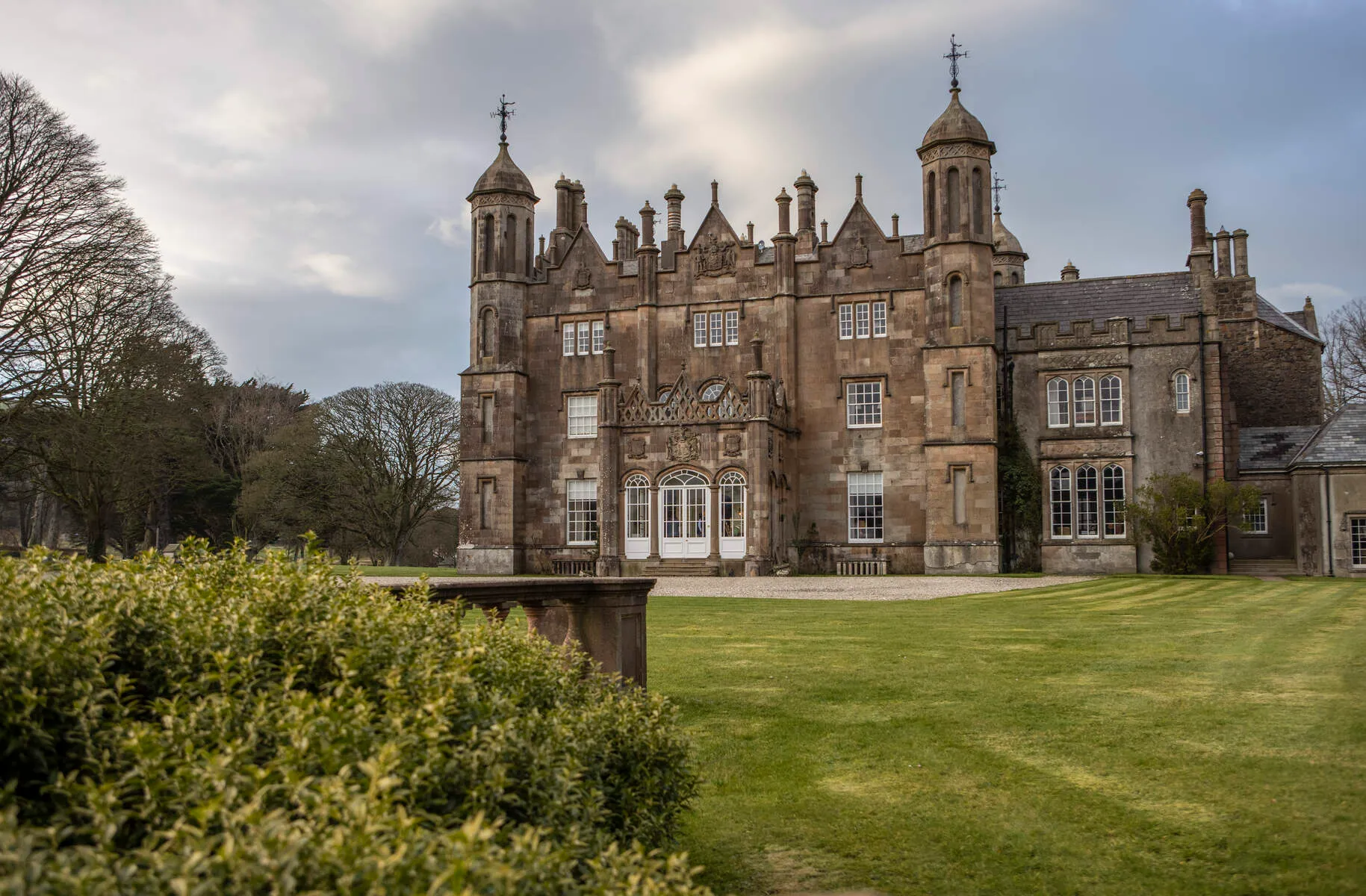Ballymena, County Antrim, cradled by the River Braid and steeped in over three centuries of history, offers a tapestry of stories waiting to be discovered. Founded in 1626 as a market hub for linen and woolen crafts, this town still hums with industry's echoes while embracing its evolution. Stroll through Gracehill Moravian Settlement, Northern Ireland's newest UNESCO World Heritage Site, where whitewashed cottages and the serene Meeting House recall 18th-century communal living. Nearby, Slemish Mountain rises like a guardian - legend says it's where Saint Patrick tended sheep during his captivity, its slopes rewarding hikers with panoramic views stretching to the coast. Ballymena's charm lies in its quiet pride: visit Arthur Cottage, ancestral home of U.S. President Chester A. Arthur, or wander The Diamond, the bustling heart of town flanked by historic churches and War Memorial Gardens.
Just a short drive from Ballymena, the Causeway Coastal Route unfurls dramatic cliffs and hidden gems like Glenarm's 13th-century castle, while Slemish looms as a challenge for hikers. Yet the town itself is no afterthought - Galgorm Castle's thermal spa invites relaxation, and the annual agricultural show draws thousands to its fields. Whether tracing St. Patrick's steps or sampling local ale in a cozy pub, Ballymena balances rural warmth with easy access to Northern Ireland's wonders. It's where history walks beside adventure, and every corner tells a story worth stopping for.
Jump to section:
Things to See and Do

Giant's Causeway
World-famous basalt columns formed by volcanic activity (UNESCO World Heritage Site), accessible via rail from Ballymena. Explore mythical legends of Fionn MacCumhail.
Gracehill Moravian Settlement
UNESCO World Heritage Site founded in 1765, featuring Georgian architecture, historic buildings (including Gracehill Old School), a museum, and a vibrant community showcasing Moravian traditions.

Slemish Mountain
A volcanic plug offering panoramic views of Northern Ireland. Associated with St. Patrick's early life here as a herdsman; pilgrimage site on March 17th with steep paths and historical significance.
Arthur Cottage
An 18th-century thatched farmhouse near Cullybackey, ancestral home of Chester A. Arthur (21st U.S. President). Demonstrates traditional Irish living with open-hearth cooking and crafts like soda bread making.
Moyle Way Trail
A scenic 35-mile hiking route from Ballycastle to Glenariff Forest Park, traversing coastal cliffs and valleys within the Antrim Coast AONB.
Glenariff Forest Park
Part of the Antrim Coast AONB, this forest park boasts cascading waterfalls, scenic woodland trails, and views across the Nine Glens region.
People's Park
A 12-acre park with sports facilities, children's playgrounds, a duck-filled lake, Victorian-era features like statues, and walking trails.

Galgorm Castle & Spa
A historic Jacobean-style castle turned luxury hotel, featuring award-winning thermal spa facilities, fine dining, and an 18-hole championship golf course (par 72).
Ecos Centre
An environmental education center located in Ballymena focusing on sustainability and conservation initiatives.
Antrim Hills Way
A 28-mile trail from Glenarm to Slemish Mountain through rolling hills and farmland, part of Northern Ireland's walking network.
Ballymena Town Hall & Mid Antrim Museum
Housed in a modern building since 1924, this complex includes the town's museum showcasing local history and hosts cultural events year-round.
Portglenone Forest
A woodland area featuring oak and beech trees, bluebell carpets in spring, wildlife like red squirrels, and trails for peaceful exploration.
Waterfall Walkway
A picturesque walkway near Ballymena with a dramatic waterfall, described as reminiscent of Switzerland's landscapes.
Broughshane Garden Village
A picturesque village renowned for its floral gardens and tranquil riverside wildlife park with swans and rabbits. Regularly wins 'Best Kept Village' awards.
Giant's Causeway
World-famous basalt columns formed by volcanic activity (UNESCO World Heritage Site), accessible via rail from Ballymena. Explore mythical legends of Fionn MacCumhail.
People's Park
A 12-acre park with sports facilities, children's playgrounds, a duck-filled lake, Victorian-era features like statues, and walking trails.
Getting There
By Air
-
The nearest airport to Ballymena is Belfast International Airport (BFS), approximately 20 miles from Ballymena.
-
You can fly into BFS from various UK and European cities, then take a taxi or bus to Ballymena.
-
George Best Belfast City Airport (BHD) is another option, with connections to Ballymena via taxi or bus.
By Train
-
Trains run hourly from Belfast (multiple stations) and Antrim to Ballymena, taking approximately 40 minutes.
-
The train continues to Coleraine, Castlerock, and Derry.
-
Change at Coleraine for trains to Ulster University and Portrush.
-
Ballymena railway and bus station is about a quarter of a mile west of the town center.
By Bus
-
Goldline Bus 218/219 runs every two hours from Belfast via Antrim, taking approximately 1 hour to reach Ballymena.
-
The bus continues to Cloughmills, Ballymoney, and Coleraine.
-
Ulsterbus 130 runs three times a day (Monday-Saturday) from Larne, taking approximately 45 minutes to reach Ballymena.
-
Bus 131/217 runs from Ballycastle via Cloughmills, taking approximately 70 minutes to reach Ballymena.
By Car
-
From Belfast, follow the M2/A26 and expect a journey time of approximately 30 minutes.
-
Ballymena is located near the A42 and A26 roads, making it accessible by car from various directions.
-
The town is 40 kilometres north west of Belfast, with road connections to Antrim and other major towns in Northern Ireland.
Other Options
-
Cyclists can use the Sustrans National Cycle Routes 93 and 97 to reach Ballymena.
-
Walkers can use the Moyle Way or Antrim Hills Way, which are part of the Waymarked Ways in Northern Ireland.
Events & Festivals 2025
There are currently no events listed. If you would like to add an event, please contact us.
History
Ballymena's history stretches back to the Early Christian period, with evidence of ringforts and souterrains in the area. The townland of Kirkinriola boasts an ancient parish church and graveyard, featuring a stone slab carved with a cross and the inscription "ord do degen", referencing Bishop Degen from the 7th century. In the 12th century, Normans conquered much of County Antrim, building defensive structures like Harryville's motte-and-bailey.
The 14th century saw the town granted a charter by King James I, establishing it as a center for trade and commerce. During the Plantation of Ulster, English and Scottish settlers arrived in Ballymena. The original castle was built in the early 17th century, situated near an ancient ford over the River Braid. In 1626, Charles I confirmed the grant of the Ballymena Estate to William Adair, allowing him to hold a market on Saturdays.
The Irish Rebellion of 1641 led to the burning down of Ballymena Castle. The town was rebuilt and became a major center for the linen industry. During the Williamite War, Ballymena played a key role, with Galgorm Castle serving as the headquarters of the Duke of Württemberg. By 1704, the population had grown to 800, and the first Protestant parish church was built in 1707.
The 18th century saw the founding of the Gracehill Moravian settlement in 1765. In 1798, Ballymena was briefly occupied by United Irishmen. The 19th century brought significant industrialization and urbanization, with the population reaching 4,000 by 1834. The Belfast and Ballymena Railway was established in 1848, further boosting the town's economy.
In the 20th century, Ballymena played a role as a military base and supply depot during World War II. Notable figures like Roger Casement, James McHenry, Liam Neeson, and Ian Paisley have ties to the area. Today, visitors can explore historical sites like Arthur Cottage, a restored 18th-century farmhouse in nearby Cullybackey. Ballymena's complex history has shaped the town into what it is today, with its rich cultural heritage and industrial legacy still visible in its architecture and landmarks.
